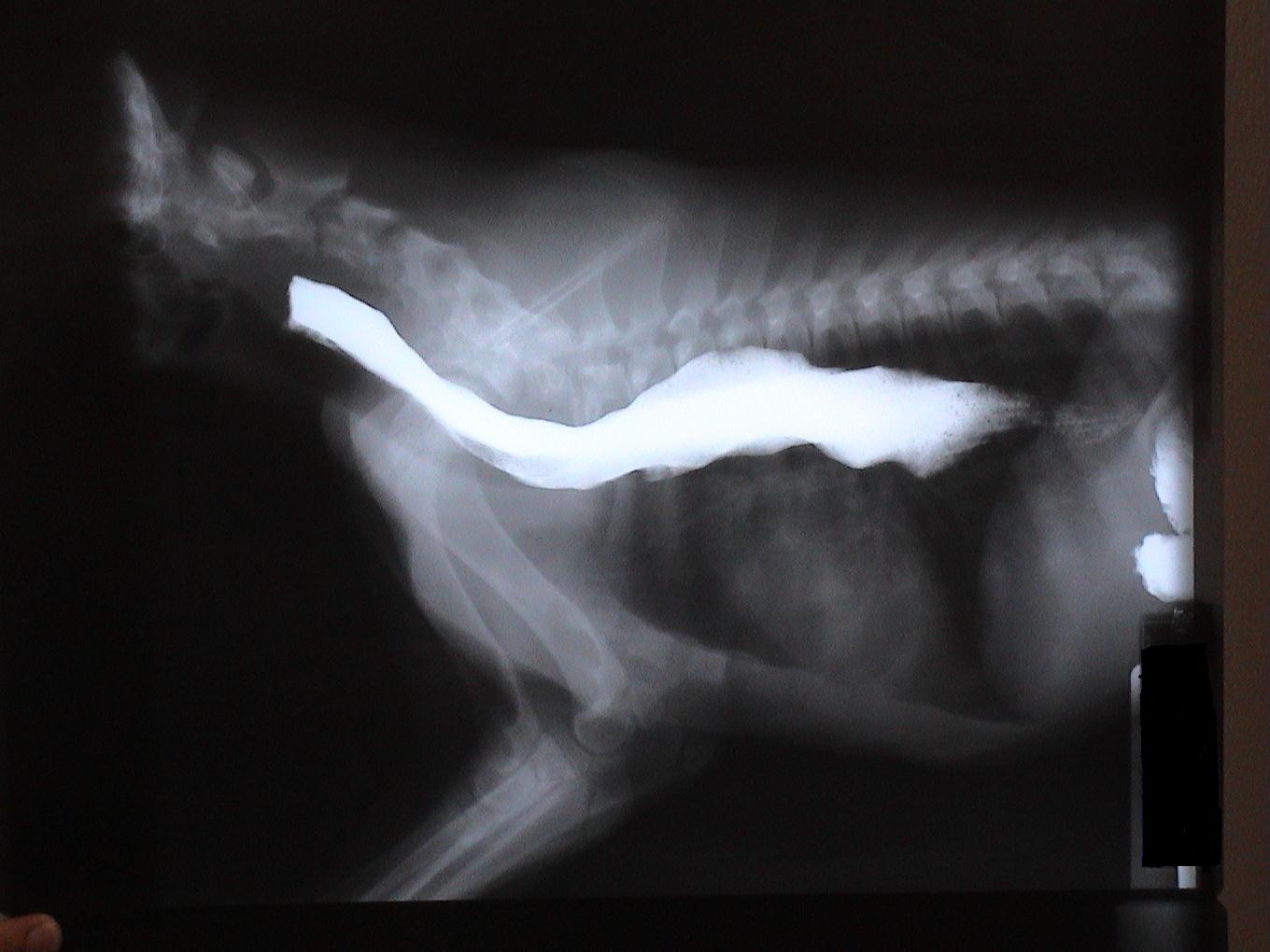"The Best Care For Your Best Friend."
Chief - Megaesophagus-Congenital
This x-ray demonstrates one film in a barium study. (Barium is a liquid contrast media that shows up as a bright white substance on an x-ray. It can be used to demonstrate the size and shape of structures that do not show up well on regular x-rays.)
The large white tubular structure is an abnormal esophagus or megaesophagus. Animals can be born with a megaesophagus (congenital) or can develop one secondary to several conditions (acquired).
Because of its enlarged size, food is unable to properly move from the mouth to the stomach. Thus, animals with megaesophagus will often regurgitate whole/undigested food. Aspiration of regurgitated food and secondary pneumonia is the most common complication in animals with a megaesophagus.
It is often not possible to "cure" a megaesophagus since surgical options are limited. Thus medical management is often the only treatment available. Feeding multiple, small, softened meals from an elevated position can significantly decrease regurgitation episodes. Special thanks to Chief's owners for allowing us to share this case.



Share On: